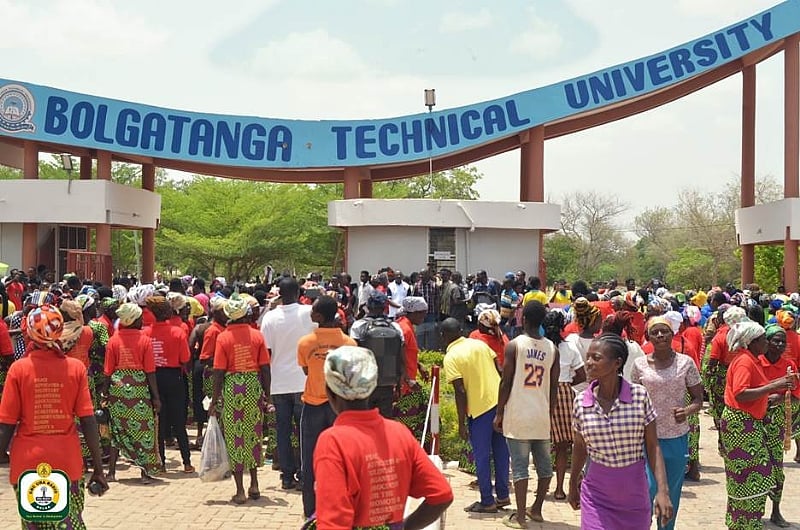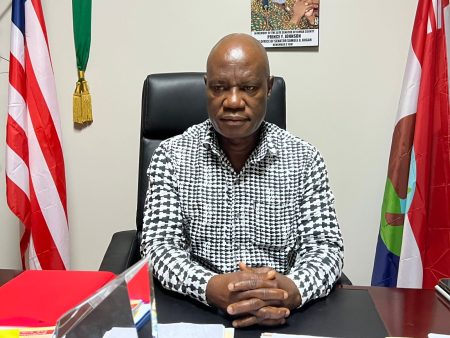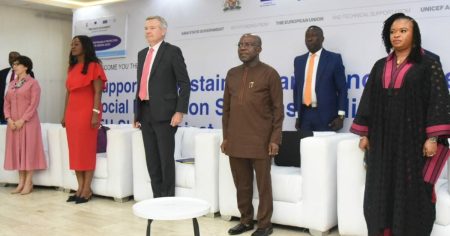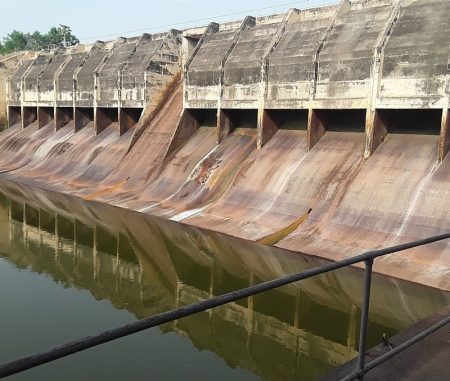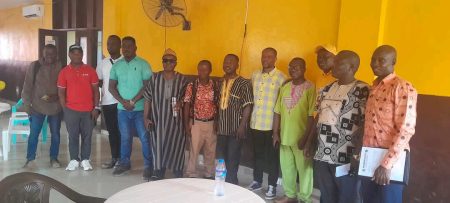The community of Sumbrungu, located near Bolgatanga in Ghana, mobilized a powerful demonstration against the leadership of Bolgatanga Technical University (BTU) on June 3, 2025. Driven by a coalition of youth, women’s groups, and traditional leaders under the banner of the Sumbrungu Youth and Development Association (SUMDAM), the protest highlighted long-standing grievances related to land agreements, sanitation issues, employment practices, and perceived disrespect from the university’s Vice-Chancellor, Professor Samuel Erasmus Alnaa. The demonstration saw a significant turnout, including representatives from various Sumbrungu chieftaincies, women’s groups, youth organizations, and the association of widows, underscoring the widespread community concern regarding BTU’s conduct.
At the heart of the dispute lies a 10-acre plot of land comprising 440 plots, willingly offered by the Sumbrungu community for BTU’s expansion. According to SUMDAM President Albert Adongo, the land acquisition process, initially progressing smoothly, was abruptly halted by Professor Alnaa upon assuming his position in 2017. The Vice-Chancellor allegedly abandoned the agreement without a clear explanation, causing anxiety within the community about future expansion possibilities given the increasing scarcity of land due to ongoing development. Furthermore, the community perceives Professor Alnaa’s subsequent proposals for payment – initially offering the 2013 price in five-year installments, then extending it to 10 years after a modest price increase suggestion from landowners – as exploitative and disrespectful. The fear of the annexed campus being abandoned, rendering the community’s sacrifice meaningless, further fuels their discontent.
Beyond the land dispute, the community’s petition outlines three other major concerns. Firstly, a severe sanitation crisis stemming from an open gutter running through the BTU campus into Sumbrungu has created a public health hazard, breeding mosquitoes and contaminating the environment. Despite repeated complaints, BTU has allegedly failed to address this issue. Secondly, the community alleges a breach of an agreement to prioritize Sumbrungu residents for menial and low-ranking jobs at the university. They claim that only a small fraction of these positions are held by community members, with no clear process for replacement upon retirement or death. Furthermore, qualified individuals from Sumbrungu are allegedly overlooked for higher-level positions in favor of “outsiders.” Finally, the community accuses Professor Alnaa of displaying consistent disrespect towards traditional leaders, summoning them through informal messengers instead of official invitations and failing to consult them on university matters.
The community’s demands, presented in their petition, are comprehensive. They call for employment equity through a quota system for both academic and non-academic positions, a transparent recruitment process, an immediate sanitation emergency plan, fair compensation for the disputed land at a revised value, a public commitment from BTU to retain the Sumbrungu-Agose land, and management reforms to ensure accountability. Crucially, they demand the immediate removal of Professor Alnaa as Vice-Chancellor to restore trust and pave the way for a more respectful relationship between the university and the community.
The petition was delivered to BTU’s head of security, Mr. Raymond Anyimbillah, in the absence of the Vice-Chancellor or any administrative representative. A copy was also presented to the Regional Minister, Honorable Donatus Akamugri Atanga. The Minister commended the peaceful nature of the demonstration and assured the community that he would forward the petition to the President and initiate the necessary steps for engagement and resolution. He expressed his appreciation for the community’s continued commitment to BTU’s expansion, emphasizing the importance of land acquisition for institutional development. He pledged to investigate the reasons behind the university’s inability to pay for the land and promised to update the chiefs promptly on the progress.
The Sumbrungu Youth and Development Association, led by its executive committee, has made it clear that their actions are far from over. They warn that failure to address their demands will lead to escalated protests, including legal action, media campaigns, and nationwide advocacy. They have called upon the government to intervene to prevent further unrest and urged the media to amplify their voice. This determined stance underscores the depth of their grievances and their commitment to securing a just and equitable relationship with Bolgatanga Technical University.
The demonstration in Sumbrungu highlights the complex dynamics between educational institutions and the communities they serve. Issues of land ownership, resource allocation, employment opportunities, and respect for local traditions are often at the forefront of these relationships. The Sumbrungu community’s mobilization underscores the importance of open communication, mutual respect, and accountable leadership in fostering positive and sustainable partnerships between institutions and their surrounding communities. The outcome of this dispute will likely set a precedent for future interactions between BTU and Sumbrungu, and potentially influence similar situations elsewhere in the country. The community’s unwavering determination to have their voices heard and their demands met emphasizes the critical role of community engagement in shaping the future of development and ensuring that the benefits are shared equitably.
The Sumbrungu community’s approach, combining traditional leadership with the activism of youth and women’s groups, demonstrates a united front. The inclusion of various segments of the community – chiefs, elders, women’s groups, youth organizations, and widows – underscores the collective nature of their grievances and their shared desire for a resolution. This broad-based participation strengthens their message and increases the pressure on BTU and the government to address their concerns. The detailed articulation of their demands, covering land, sanitation, employment, and respect for traditional authority, reveals a well-organized and informed approach to advocacy.
The involvement of the Regional Minister, Honorable Donatus Akamugri Atanga, offers a potential avenue for mediation and resolution. His commitment to engage with both the community and the university management presents an opportunity for dialogue and negotiation. The success of this intervention will depend on the willingness of both parties to engage constructively and find mutually acceptable solutions. The Minister’s acknowledgement of the community’s peaceful approach and their continued support for the university’s expansion creates a positive starting point for these discussions.
The ultimatum issued by SUMDAM, with the threat of escalating actions if their demands are ignored, highlights the seriousness of the situation. Their preparedness to pursue legal action, media campaigns, and nationwide advocacy indicates a long-term commitment to achieving their goals. This firm stance puts pressure on BTU and the government to take their concerns seriously and respond promptly. The community’s call for media attention further amplifies their message and increases public awareness of the dispute, adding another layer of pressure on the relevant authorities.
The underlying issues raised by the Sumbrungu community are not unique to this particular situation. They reflect broader challenges related to land acquisition, resource management, employment opportunities, and the relationship between institutions and local communities. The outcome of this dispute could serve as a valuable case study for addressing similar issues in other contexts. The community’s proactive approach to advocacy and their determination to hold institutions accountable can inspire other communities facing similar challenges to organize and demand their rights. The outcome of this situation will be closely watched by communities across the country grappling with analogous concerns.





